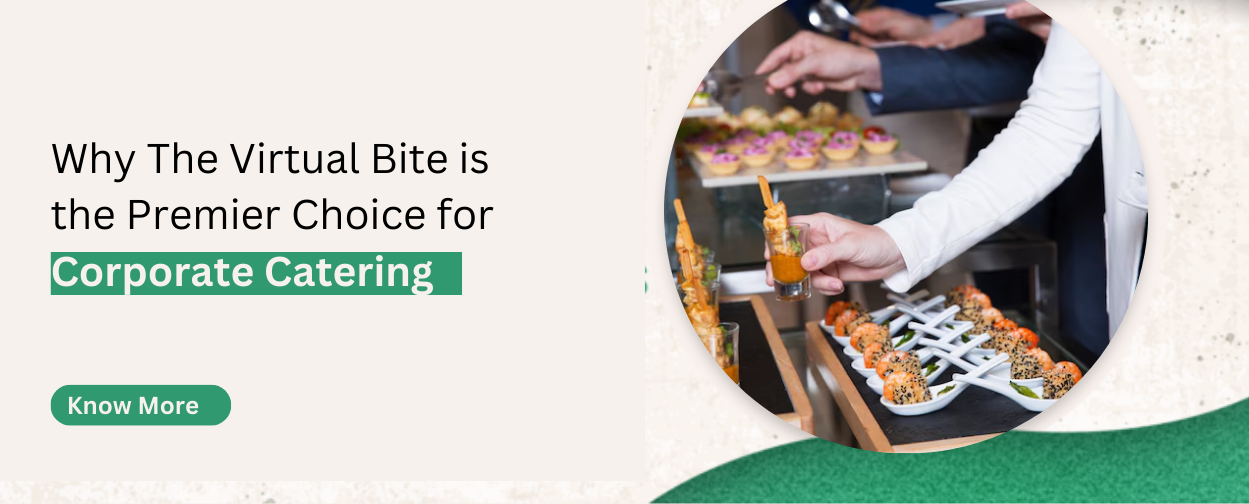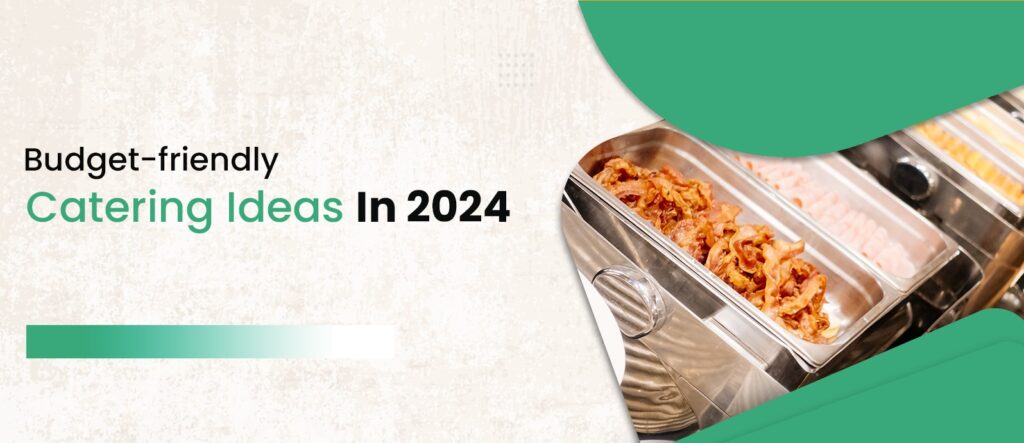In today’s rapidly evolving corporate landscape, where virtual events have become a staple rather than a novelty, the demand for services that can seamlessly adapt to this digital shift has skyrocketed. Enter “The Virtual Bite,” a name that has become synonymous with innovation, quality, and unparalleled service in the realm of corporate virtual catering.
As businesses strive to foster connections and enhance engagement in a virtual setting, The Virtual Bite stands out as the premier choice, offering a bespoke catering experience tailored to the unique demands of corporate events.
This introduction will guide you through why The Virtual Bite is not just a catering service, but a comprehensive solution to elevate your corporate gatherings, blending taste, technology, and sustainability into a memorable virtual event experience.
Tailored Menus For Diverse Corporate Needs:
In today’s ever-evolving corporate world, the demand for customized culinary experiences is at an all-time high. Recognizing this, our culinary team specializes in creating tailored menus that cater to a vast array of corporate needs and dietary preferences.
Whether it’s a small team meeting, a large-scale corporate event, or a wellness-focused retreat, our chefs are adept at crafting diverse menus that not only satisfy but delight. From gluten-free, vegan, and vegetarian options to locally sourced, seasonal dishes that highlight the best of what the region has to offer, our goal is to provide a dining experience that is as inclusive as it is exquisite.
We understand that each event is unique, and by offering personalized menu planning, we ensure that every meal resonates with the guests, supports the event’s theme, and enhances the overall corporate experience. Our commitment to quality, flavor, and dietary inclusivity is what sets us apart, making us the go-to choice for companies looking to make a lasting impression on their employees and guests alike.
Quality and Sustainability: Our Core Principles
Creating a content outline focused on “Quality and Sustainability: Our Core Principles” can help articulate the foundational values of your business, especially if you’re in a sector like catering where these aspects are increasingly important to customers. Here’s how you might structure this content:
Quality as Our Cornerstone:
- Definition and Importance
- Explain what quality means to The Virtual Bite.
- Discuss why quality is crucial in the catering industry.
- Quality in Our Ingredients
- Detail the criteria for selecting your ingredients (e.g., freshness, locality, organic certification).
- Highlight partnerships with local farmers and suppliers.
- Quality in Our Preparation
- Describe your kitchen’s best practices (e.g., trained chefs, culinary innovation, hygiene standards).
- Showcase any unique cooking techniques or equipment that ensure superior food quality.
- Quality in Our Service
- Outline how quality extends beyond the plate, including customer service, customization options, and delivery.
Sustainability as Our Commitment:
- Understanding Sustainability in Catering
- Define what sustainability means for your business.
- Explain the environmental impact of catering and why sustainability is essential.
- Sustainable Sourcing
- Discuss how you ensure your ingredients are sustainably sourced.
- Mention any certifications or standards you adhere to.
- Reducing Waste
- Describe steps taken to minimize food waste.
- Highlight initiatives for recyclable, biodegradable, or reusable packaging.
- Energy Efficiency and Water Use
- Briefly detail efforts to reduce energy and water consumption in your operations.
- Community Engagement
- Explain any local community support or educational programs you’re involved with to promote sustainability.
Section 3: Our Promise to You
- Commitment to Continuous Improvement
- State your ongoing efforts to enhance both quality and sustainability.
- Mention how customer feedback contributes to these improvements.
- Transparency and Standards
- Reaffirm your commitment to being open about your practices and adhering to high standards.
- Invitation for Feedback and Participation
- Encourage readers to share their thoughts and suggestions.
- Offer ways for customers to get involved in sustainability efforts (e.g., returning packaging for reuse).
Technology-Driven Solutions for a Modern Workplace:
- Showcase the innovative use of technology in streamlining service delivery and enhancing the virtual event experience.
- Examples of technology integration, such as virtual tastings, menu customization apps, or interactive presentations during events.
Building Strong Corporate Partnerships:
- Share testimonials or case studies from successful corporate events.
- Discuss the consultative approach taken with corporate clients to tailor services to their specific event goals.
Beyond Catering: Full-Scale Event Support
- Detail the additional support services offered, like event planning assistance, tech support for virtual events, and post-event follow-ups.
- Highlight partnerships with tech providers or event planners for a comprehensive service package.
Cost-Effectiveness and ROI:
In today’s competitive business landscape, achieving cost-effectiveness and maximizing return on investment (ROI) are paramount for sustainable growth and profitability.
Cost-effectiveness refers to the efficient allocation of resources to achieve desired outcomes, while ROI measures the profitability of an investment relative to its cost.
Understanding these concepts requires a comprehensive analysis of both direct and indirect costs, as well as a consideration of long-term benefits versus short-term expenses.
By calculating ROI using relevant metrics and implementing strategies to maximize cost-effectiveness, businesses can make informed decisions that drive profitability and long-term success.
It’s essential to recognize the interplay between cost-effectiveness and ROI, as cost-saving measures should not compromise revenue-generating opportunities.
Ultimately, by striking the right balance between efficiency and investment, businesses can optimize their financial performance and position themselves for sustainable growth in the market.
Conclusion:
In conclusion, achieving cost-effectiveness and maximizing ROI are essential components of a successful business strategy. By meticulously analyzing costs, implementing efficient processes, and making strategic investments, businesses can enhance their bottom line while delivering value to customers.
The relationship between cost-effectiveness and ROI is symbiotic; as businesses optimize their operations to minimize expenses, they simultaneously increase the potential for higher returns on investment.
However, it’s crucial to maintain a balance between cost-saving measures and revenue generation efforts to ensure sustained profitability and growth. Through ongoing analysis, adaptation, and a commitment to efficiency, businesses can navigate the complexities of the market landscape and position themselves for long-term success.
Embracing the principles of cost-effectiveness and ROI empowers businesses to make informed decisions that drive financial performance and create lasting value for stakeholders.



